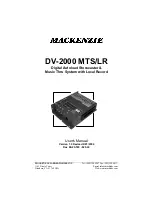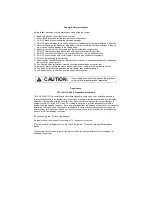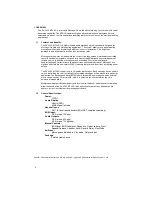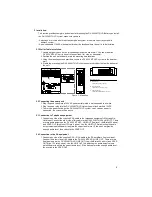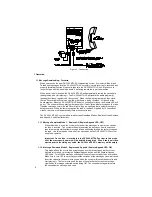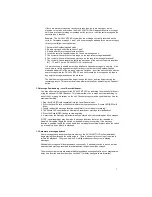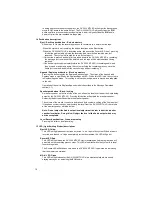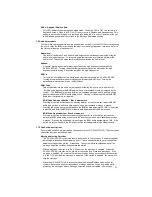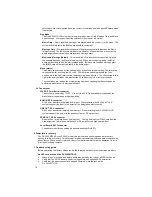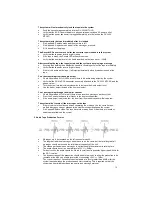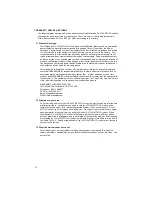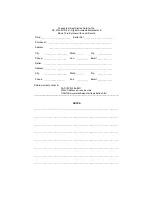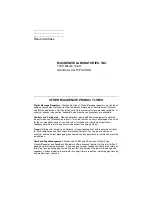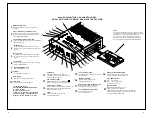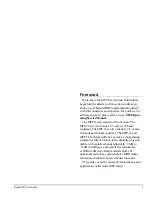
General Safety Instructions
Always follow these basic safety precautions when using the system:
1. Read carefully and understand all instructions.
2. Follow all warnings and instructions marked on the product.
3. DO NOT block or cover ventilation slots and openings.
4. DO NOT place the product in a closed enclosure or cabinet unless proper ventilation is provided.
5. Never spill liquid on the product or drop objects into the ventilation slots and openings. Doing so
may result in serious damage to the components.
6. Repair or service must be performed by a factory authorized repair facility.
7. DO NOT staple or otherwise attach the power supply cord to building surface.
8. DO NOT use the product near or in wet or damp places, such as wet basements.
9. DO NOT use extension cord. Install within 6 feet of a grounded outlet receptacle.
10. DO NOT install during lightning storm.
11. Never touch un-insulated wires or terminals unless the unit is disconnected from both power and
the rest of the phone system.
12. Use Caution when installing or modifying configuration switches or control lines.
13. Install in a protected location where no one can step on, or trip over, power and line cords.
14. The unit must be securely attached to a wall board, rack or table mounted.
15. Use correct power source. Use only the power pack supplied.
CAUTION:
If any wiring from the system leaves the premises,
you must use proper electrical protectors.
Regulations:
FCC (Part 15) Radio Frequency Interference
The DV-2000 MTS/LR generates and uses radio frequency energy and if not installed and used in
strict accordance with the manufacturer's instructions, may cause interference to radio and television
reception. Unit complies with the limits for Class A devices in accordance with the specifications in
Subpart J of Part 15 of the FCC Rules. This testing is designed to provide reasonable protection
against such interference. However, there is no guarantee that interference will not occur in a particular
installation. If this equipment does cause interference to radio or television reception, which can be
determined by turning the unit off and on, the user is encouraged to try to correct the interference by
one or more of the following measures:
-Reorient the radio or TV receiving antenna.
-Relocate the unit with respect to the radio or TV receiver or vice-versa.
-Plug the unit into a different outlet so that it and the radio or TV receiver are on different branch
circuits
-If necessary, the user should consult the dealer or an experienced radio/television technician for
additional suggestions.

